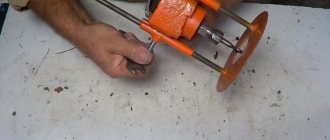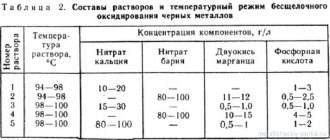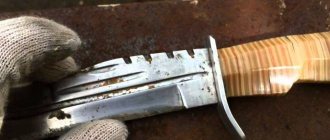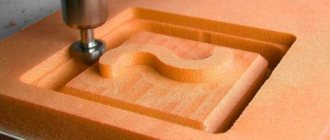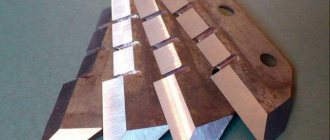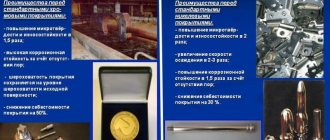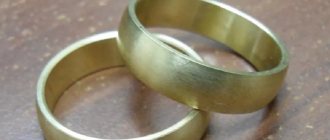One of the most frequently encountered problems for a CNC machine operator is how to fix a part on a CNC machine. Modern machines and CNC machining centers for processing wood-based materials, including MDF facades, have a sufficient arsenal of parts fixing devices to efficiently and safely perform one or another processing of a workpiece, regardless of its shape, size, or density. However, not always and not all of them are available for use: due to high cost, design features of the work table of a CNC machine, the presence of additional equipment for supplying vacuum or compressed air, the characteristic properties of the workpiece material, or for other reasons.
Methods of fixing (locking) parts on CNC machines, depending on the design of the equipment, can be divided into three types: mechanical, using vacuum and using pneumatic equipment.
Purpose and types of clamps for a metal milling machine
Milling machines are indispensable equipment for machining parts.
They allow you to perform the following operations: cutting off workpieces, boring, drilling, milling flat surfaces, ledges, grooves, curved and helical surfaces, as well as threads. When performing all of the above tasks, it is necessary to secure the workpiece on the machine. For this purpose, universal machine tools are used.
Purpose
Rational use of machine tools makes it easier for the milling machine operator, reduces auxiliary time for processing workpieces, ensures reliable fastening of workpieces and increases the accuracy of the workpiece, allows simultaneous processing of several workpieces at once, which has a positive effect on increasing the production rate. One such device is a clamp.
Clamps for a milling machine are special devices that are used for basing (fixed fastening) of processed workpieces on the machine. They increase labor productivity and allow processing without preliminary marking and alignment. The milling machine table has T-shaped slots for installing clamp screws.
Clamps on a milling machine must provide fast and rigid clamping of the workpiece being processed, and must also have high strength, otherwise the workpiece being processed may fly off the table and harm the miller or damage the equipment.
Devices and equipment. Working solutions
Having figured out how we are going to place and attach our attachment to the milling machine, let's look at what types of attachment there are in principle.
Milling vice
Pair of milling vicesOLYMPUS DIGITAL CAMERA
Today, the most popular solution for fixing workpieces is a vice. There are many manufacturers of these vises, a notable example being Kurt, who produced the first vises in the 1950s.
For a more detailed description of the machinist's vice, see our Complete Guide to the Vise. It's full of useful information.
Clamps, accessories and fixtures for plates
As useful as vices are, they do have their drawbacks. They have a hard time working with really large plates, although as mentioned, you can move the jaws to the extreme position for medium-sized plates. And they may also not be optimal for very small parts. Of course, you can place multiple parts in an array, but this is often inconvenient.
It's difficult to get small parts to fit so tightly with a vise, but the plate jig makes it easy. Mitee Bite Pit Bull clamps are used here. The effect is not unlike a tiny milling vice that fits every part perfectly.
When it comes time to handle large sheets or a lot of small parts, it's usually time to take the vise off the table and use clamps.
Step clamps
The most common type of clamp is called step clamp because it has small steps machined into it. They are typically used with T-slots, although you can also bolt them into the tool plate. Here are some typical stepped clamps:
The step clamp pressure plate, the step block supporting end of the clamp, and the bolt pass through the T-slot nut
Step Clamp Set
The photo shows a typical set of stepped clamps. It may be handy to stock up on an extra set so you have more clamping parts to work with. By stacking stepped blocks on top of each other and using longer bolts, you can clamp fairly tall workpieces. When using stepped clamps, keep the bolt close to the workpiece rather than the stepped block. It may be helpful to tilt the clamp onto the piece, raising it a step or two from level. You can also place a pad of soft material between the clamp and the workpiece to prevent damage to the workpiece.
Clamping blocks
Step clamps grip the top of the workpiece, which is sometimes inconvenient because you may need to machine the captured area. Toe clamps grip the side of the workpiece, allowing full access to the top of the workpiece. Many different types available:
This toe clamp moves the clamp down the ramp as it is tightened to press against the workpiece
These Mitee Bite Edge clamps have an eccentric bolt head that forces the hex against the workpiece as you tighten it.
Double-sided tape, glue, wax and low melting point alloys
Some workpieces are very difficult to hold because they are thin or because of their shape. As a rule, it is simply impossible to clamp them. Solutions for these situations include double-sided tape, glue, wax, and low melting point alloys.
The glue should be something that is released when needed. For example, Super Glue releases at a certain temperature, as does LocTite. The fumes from it are toxic, so try to remove them with good ventilation. Double-sided tape works great, especially for very thin materials.
Wax and low melting point alloys (usually bismuth alloys). They can be used to build up the workpiece and create a gripping zone. When processing is complete, the wax or alloy can be melted and stored for reuse.
Vacuum devices
Do you need to apply even pressure to hold the part? It can generate significant holding force given sufficient surface area. And it doesn't depend on the shape or how thin the material is. We have a good article on how to make your own vacuum attachments.
Perhaps the biggest disadvantage of vacuum tools is that their clamping force is limited by the surface area. Because of this, small parts can come off relatively easily. When the cutting forces exceed the clamping force that the vacuum table can provide, the part will pop out and deteriorate. This is a common problem for vacuum table users. This is especially true for small parts that do not have a large surface area.
Chucks and collets: for round parts
Typically round parts are machined on lathes, although in many cases milling may be required. If you have a lathe/mill, it may not be necessary to put it on a milling machine. But if you just need to work on some round parts on the router, you can use the same fasteners as for lathes. Simply bolt them on or press them against the mill table. For example, use a three-jaw chuck or a collet chuck set.
Lathe chucks are especially common on 4-axis because we often start with a round workpiece.
From time to time we put round pieces on the table because it's much faster. Consider this setup for processing round parts:
4-axis installation
I would never have thought, but many experts say that this 4-axis setup is very effective. It was capable of cutting aluminum rods to length, providing square edges, and drilling and tapping holes faster than a lathe.
Expansion mandrels, mandrels and studs
We can use expansion mandrels, mandrels or studs. The idea is to place the flared cylinder into a hole on the underside of the workpiece. This will secure the workpiece in place. So, you can access the workpiece from all sides except the bottom. This way, you won't collide with the support being processed (you need to remember where the mandrels are so you don't have one in the middle of the pocket!).
Here's a fixture using flared studs:
Turning the bolt spreads the pin apart to allow the workpiece to be clamped
There are many similar devices available to suit your needs. These are especially common for lathes, but as we already mentioned, you can use a lathe tool at work if you can find a way to secure it to the table.
Types of clamps for metalworking machines
It is worth highlighting that in order to obtain a high degree of processing of metal workpieces and the highest level of productivity, clamps are classified with a focus on a high level of requirements.
Particular attention is paid to the following parameters: accuracy and rigidity. When basing one workpiece, the unit allows, if necessary, fine tuning, which is associated with a large number of transitions and nuances of processing different types of surfaces.
To do this, it is necessary that the sets of clamps and their installation-type elements do not interfere with the advancement of the cutting edge to the entire surface being processed. In this case, the workpieces processed for machine tools must have surfaces that provide:
- location accuracy;
- reliability of fastening;
- Convenient placement of clamps.
Universal unlined
It is a bar that actually presses the workpiece. The clamping occurs through a screw support. A screw stop or a lining can be used as a support. The clamp consists of a T-bolt, a strip, a stand and a locking washer.
C-shaped
There is no pad in this clamp, but there is a hinge mechanism with which you can adjust the desired reach. The hinge has a nut on which a special ring is installed. If necessary, the ring can be removed, set the nut to the desired height, and put the ring back on. The nut will screw onto the thread and secure the structure.
Fast acting
This clamp consists of a post, a toothed plate, a spring and a clamp body. On top of the clamp there is a spring, then a toothed plate with a handle. This mechanism clamps the clamp body, which allows it to move over its entire height.
Comb clamping mechanism
It has several teeth of precise shape, which allows you to tightly clamp the workpiece. The teeth are at a slight angle, which allows for uniform pressure on the workpiece.
Using a clamp
A clamp is an auxiliary accessory that consists of a clamping device and a pin. At the bottom of the clamp there is a spring that holds the entire structure.
- f-shaped - for workpieces with large dimensions;
- g-shaped - the most common clamps, used for clamping small workpieces;
- pipe - used to create high pressure on the part;
- angular - connect parts at an angle.
Varieties
There are several types of milling clamps:
- Universal unlined. It is a clamping bar that must be supplemented with support. If there is no screw support, a backing is used. In appearance, it is a T-shaped bolt, which is threaded through a stand with a bar, clamped with a washer. This instrument is sold disassembled.
- Comb mechanism. It has several clamping teeth that are located at certain angles. This allows you to hold the workpiece more securely, preventing it from slipping due to vibrations. The pressure is distributed not only over the top of the workpiece, but also along its sides.
- C-shaped. There is a metal ring on the clamping bolt that increases the pressure area. If desired, you can remove it and remove the bolt. The main advantages are simplicity of design, ease of operation, reliability, and durability.
- Fast-acting mechanisms. The operating principle is based on a lever-spring system. Additional elements are the tool body, a bar with teeth, a spring, and a stand.
- Cam clamp kit. Represents 5 monolithic devices. Each of the cams has two working surfaces. They are secured with bolts and crackers.
The operating principle of the clamps does not change depending on their type. There are several types of clamps:
- Pipe - designed to create powerful pressure when connecting materials. Can be made of cast iron.
- F-shaped - suitable for working with large workpieces.
- Corner - allow you to set an angle and fix it motionless.
- G-shaped - used for fastening small parts.
The choice of equipment depends on the size of the workpiece being processed. Modern clamps have a special hook with which you can quickly release the pressure and change the setting.
There are also special mounting kits. They will be needed in cases where it is necessary to process a part of complex shape, and it is impossible to hold it with ordinary clamps.
For high-precision fixing of the workpiece, sets of angles and plates of different thicknesses are used. They play the role of linings when it is necessary to set the level down to millimeters.
There is equipment that is installed by milling machine manufacturers themselves. Kinds:
- Screw spacers, angles.
- Step clamps.
- Tile stops.
- Fork-shaped clamps that slide along guides.
- Trough-shaped vice.
- Universal clamps with a curved shape.
When choosing a machine, you need to inquire about the availability of clamps and their type.
Which one is better to choose?
The choice of clamps for a machine for wood and metal has its own characteristics.
On wood
As a rule, clamps for wood milling machines have a simplified design. They should be selected on the basis that neither the clamps nor their elements block access to the workpiece being processed.
For metal
The choice of clamp depends on:
- on the dimensions of the workpiece being processed;
- from the clamping stroke;
- from the material from which it is made;
- from the clamping mechanism.
Plastic clamps are short-lived when working with metal workpieces.
How to replace on a hand router
Replacing the collet on manual routers is the simplest operation and consists of the following steps:
- The spindle itself is secured using a stopper in the housing or a key in the grooves of the spindle (depending on the model).
- The clamping nut is completely unscrewed and removed.
- The collet is pulled out.
- A new one is inserted.
- The nut is tightened.
There will be no problems if the part fits exactly on the clamp of that particular model. It is important that the diameter of the mounting hole of the new collet matches the shank of the cutter that will be used.
The nut should be tightened tightly enough, but without fanaticism, so as not to strip the thread.
How to make it yourself?
Do-it-yourself clamps must meet the following criteria:
- smooth pressing stroke;
- the clamping bar must be large in size in order to create the necessary pressure on the workpiece;
- satisfy all safety requirements;
- must not damage the workpiece.
There are two ways to make clamps yourself:
- Remove the spinning rollers from the washing machine. Make a frame with guide pins, connect them with a U-shaped profile, on which secure the shafts and clamp them with an adjusting bar.
- Install a rail on both sides of the frame. Install two bearings on the drive shaft. The clamp will be adjusted by a spring that moves freely.
After installing a self-made clamp, the performance characteristics of the machine should not deteriorate. Milling machines are widely used in production when processing both metal workpieces and wood processing. They perform a wide range of operations. For high-precision work, workpieces must be securely mounted on the bed. For this purpose, clamps, vices and other workshop equipment are used.
Types of clamps for a milling machine
In all used metal milling machines, which can also carry out drilling and boring, special devices are used - clamps.
Most DIY wood milling machines have such clamping devices.
Clamps for milling machine
The main requirements that are put forward for the design of milling clamps for woodworking machines are the implementation of device capabilities that are associated with quick height adjustment, compactness and ease of use with your own hands.
Purpose of clamps for a milling machine
Clamping devices are used in drilling, milling and lathes to fix workpieces on the bed, and are necessarily included in the set of tools that equip the equipment. They are able to secure the product so that it can be processed conveniently from any side. Replacing clamping devices with simple yews will not bring the long-awaited result, due to the frequent inability to properly fix the part.
On the bed of processing machines there are special openings in which milling clamps are bolted. The bolts have special heads that prevent the bolt body from turning and make the connection especially strong.
To achieve a high level of product processing, clamping devices are classified by type of clamp. One clamp installed on the machine is capable of ensuring the accuracy of adjustment associated with numerous transitions when working with different types of parts.
Clamps for milling machines, drilling and other types of equipment must ensure quick and rigid fastening of the workpiece on the side required for work, height adjustment, and free access of the cutting tool to the product. The workpieces processed must meet the following requirements:
- exact location of the material;
- reliable fixation of the part;
- The body of the product allows you to conveniently install clamping devices.
All types of clamping mechanisms must have a high degree of strength and not be deformed under the influence of a screw clamp. Otherwise, the element being processed may jump out and cause harm to the equipment and human health.
What it is
Features of the collet mounting of cutters are high centering accuracy. The cutter, clamped in such a clamp, is located exactly in the center and rotates without beating. This is very important, especially for high-precision machining.
The collet clamp provides reliable strength for fastening the cutter, which is also important at high speeds in woodworking and heavy loads when processing metal.
The collet clamp consists of three main parts:
- main load-bearing part with a shank , which is attached to the spindle of a machine or hand router (in different ways);
- the collet itself is a cone-shaped bushing with petals or slots;
- clamping nut.
The cutter or drill is inserted into the collet. When the clamping nut is tightened along the thread, the cone of the collet is recessed into the seat of the main part and compressed. It is for the possibility of compression that all collets have petals or simply slots on two or three sides.
The classic collet clamp in the following image:
This collet chuck has a tapered fit into the machine spindle. The clamping nut does not have a hexagon for a standard wrench. There are slots for a special key with two horns, which comes complete with such cartridges.
A short visual overview of such a clamp can be seen in the video:
Included with the described cartridge is a set of collets of different internal diameters. This makes it possible to mount cutters and drills with different shank diameters.
A replacement set of collets is important. Jaw chucks can accommodate shanks of different diameters. For example, from 0 to 10-20 mm. The collet can only hold the diameter that fits. Having a set of replaceable clamps, the master will have no restrictions in using cutting equipment with different shank diameters.
Types of clamping devices for a milling machine
High-quality machining of parts directly depends on the performance characteristics of the clamp. When drilling or boring metal elements, a vice is used. Instead, it is very convenient to use special fastening components - clamping strips with a thrust screw.
On the modern market of building materials and tools you can find a large number of fasteners and sets of clamps for milling machines and other units:
- clamps: universal, stepped, curved, fork-shaped, movable;
- supports and struts;
- corners;
- stops;
- fastening kits for various numbers of elements;
- sets of plates and angles.
The fastening set is used in cases where the machine vice is unable to grip a complex structure. The set contains additional fastening devices that allow you to grip: studs, supports, angles, nuts of different lengths, clamps with a corrugated surface.
A set of plates and squares is used if it is necessary to fine-tune and secure an object on the working surface of the machine.
Universal unlined clamp
If it is necessary to secure a part on the machine table, use a clamping bar and supplement it with a support. A screw stop or a lining is used as a support. The design ensures quick and reliable fastening of material on the table of a milling machine and other processing machines. The device looks like this: T-bolt, stand, strip, locking washer.
First, the clamping mechanism is assembled, then it is installed on the frame of the processing machine and brought to the working element. The screw rests against the bar, the body is turned around its axis and secured.
Mechanical methods of blocking a part on a CNC machine
These methods may look a little handicraft, but even when working on high-tech and expensive equipment, sometimes you have to resort to them. In addition, the use of mechanical methods for locking parts allows you to avoid using vacuum or pneumatic locking systems and, accordingly, not to consume electricity.
Clamps
Used on T-shaped work tables of CNC machines. The simplest design of a clamp consists of a bolt, a nut and a metal plate with a hole. The bolt head is inserted into the T-shaped groove, the part is fixed with a plate by tightening the nut. To lock one workpiece, two or more clamps are used.
Advantages . Availability, reliability, simplicity. Clamps are the most appropriate way to lock workpieces on CNC engraving machines when the processing program can run for several hours.
Flaws . Long and inaccurate part positioning. Inaccessibility for processing of the surface area at the workpiece attachment point. High probability of tool collision with clamping elements.
Hinged type quick release clamps
A type of clamp for quickly fixing a workpiece on a T-shaped work table of a CNC machine. It is a hinge-lever mechanism, which, with a fairly low force, creates a relatively large clamping force.
Advantages . Quick fixation of the part (with one movement of the hand). Availability, reliability, simplicity.
Flaws . The design is bulky and, as a consequence, there is a risk of collision with the tool. Relatively weak pressure.
Side clamps
Used to block the sides of timber parts or panel panels with sufficient thickness. The use of these clamps is advisable if processing of the entire area of the upper surface of the workpiece is required.
Side clamps can be used in conjunction with fixed rack stops. This combination allows for more precise positioning of the part and the use of a minimum number of clamps.
Based on the design features, we can distinguish three types of side clamps for CNC machines: screw, lever, eccentric.
Screw and lever side clamps
Their design is similar to clamps and quick-release clamps. However, fastening into the T-shaped groove here must be done more rigidly, since the low coefficient of friction between the planes of the workpiece and the work table does not ensure reliable retention of the part.
Advantages . Availability, relative safety. Possibility of blocking parts with variable height.
Flaws . Difficult to install. The holding force largely depends on the reliability of the clamp itself.
Eccentric Side Clamps for CNC Machines
They have gained great popularity among folk craftsmen. Their design is a round washer with a pin and lever offset from the center of the circle. On the desktop of a CNC machine, such a clamp is installed in special holes corresponding to the diameter of the pin.
Advantages . Simplicity, reliability, safety. Possibility to make clamping elements yourself.
Flaws . Can only be used on a specially prepared desktop. When brittle or loose materials are blocked, indentations may appear.
Horizontal mechanical clamps
Used for fixing narrow and block parts. The clamp is a vice with two parallel plates between which the part is clamped. One plate is in a stationary position, the second, with the help of a screw, presses the part. The design of the vice is located on a special platform, convenient for attaching it to the work table of a CNC machine.
Advantages . Simplicity, reliability.
Flaws . Inaccurate positioning, long preparation time, limited use only on small parts.
Self-tapping screws
This method is most relevant when it is necessary to process small workpieces or parts with complex geometry. Using self-tapping screws, the workpiece is attached to a substrate (counter template), which, in turn, can be fixed on the work table of a CNC machine in any other way. Seizing the workpiece with self-tapping screws can be done in areas of technological allowances of the workpiece, or through holes in the substrate, on the non-front side of the part.
If you need to mill a complex geometric contour in order to avoid future collisions between the cutter and the screws, you can first simulate the processing using only the substrate and, in accordance with the milled contour, make holes for the fasteners.
In mass production, to speed up the process of changing workpieces, it is possible to use several counter-patterns: while one part is in the processing stage, another is being prepared.
Advantages . Availability, simplicity. The ability to process parts along the contour, make through holes and recesses.
Flaws . Long preparation time. Relatively weak fixation, slight displacement possible. There are holes left on the parts from the self-tapping screws. The need to store a large number of counter-templates for various types of parts.
Double sided tape
The method of fixing a workpiece on a CNC machine using double-sided tape is controversial from the point of view of rationality and reliability. It is at its best when processing thin sheet materials and small parts. To securely fasten the workpiece, its surface, like the surface of the work table, must be smooth and dense.
Advantages . Security and accessibility. Through processing is possible due to the loose fit.
Flaws . High price. Instability due to the plasticity of the material. Limited application.
Hot glue
Hot thermoplastic glue is used for spot gripping of particularly small parts. Its practicality is achieved when gluing soft and porous materials with an uneven surface.
When placed on the workbench, the part is tacked along the contour at several points using a hot glue gun. Rapid hardening upon cooling helps lock the part in a short time. In this way, the workpiece is firmly held and can withstand even strong lateral loads.
Advantages . Availability, simplicity, safety. The ability to process the horizontal surface of the part over the entire area.
Flaws . Relatively long preparation and positioning time. There is a high probability of weak adhesion of the glue to the material of the surface of the part or desktop.
Making your own pressing machine
To make a clamping mechanism yourself, you should carefully observe the operation of factory models. The fastener, after its manufacture and installation on the machine, must have the following functional features:
- achieving smooth adjustment of the clamping of the object, the pressure on the product should be evenly distributed over the entire surface;
- when operating the machine, the device must not damage the workpiece (scratch, deform);
- The technical characteristics of the device must correspond to safe operating conditions.
First manufacturing option:
- The basis of the clamp is ordinary rollers for squeezing clothes from an old washing machine;
- a frame with four guides is prepared, which are connected by a U-shaped profile;
- the shafts are mounted on the profile and fixed with an adjusting bar in the upper part.
This model is bulky and uncomfortable, but quite effective. To reduce the size of the structure, the rollers can be trimmed.
Second build option:
- slats are installed on both sides of the frame;
- take two bearings and place them on the working shaft;
- the degree of fixation of the part is adjusted using a spring that moves freely along the slats;
- The clamp design helps to process the material without pre-setting.
After installing a homemade clamp on a milling or other processing machine, the operational and technical characteristics of the equipment should not become worse.
Related video: How to make clamps for a milling machine
CLAMPS AND MACHINE CRACKS
Securing some workpieces on the working surfaces of milling and drilling machines is somewhat difficult or even impossible. In this case, you should use special clamping devices that allow you to securely fix workpieces of non-standard shape or dimensions. These include clamps (clamps, clips) of various designs.
There is a wide variety of milling and drilling machine clamps available. The following can be used as clamping devices:
- Classic clamps;
- Threaded products - studs, bolts, nuts of non-standard configuration (elongated, flanged, T-shaped (crackers));
- Magnetic and non-magnetic screw supports;
- The clamps are hinged, spring-loaded;
- Flat machine clamps, type Us and Ys;
- Stepped supports, etc.
There are ready-made kits for fastening workpieces on a machine tabletop, equipped with threaded rods of various lengths, diameters, corresponding nuts, and crackers. Their size corresponds to the configuration of the grooves on the working surface of the machines, stepped and/or screw supports of different dimensions and clamps.
Clamps and clamps, as a rule, are not included in the standard kit and must be purchased separately
With these versatile clamping kits for your router table or drill press, you can machine workpieces of almost any shape and size.
HOW TO SELECT THE CORRECT CLAMPING DEVICES.
Measure the width of the groove on the machine table at the top (narrow) part
as it shown on the picture. If the groove is for example 12mm
This means you need a set SPW-10 for groove 12
The number 10 indicates the diameter of the mounting bolt


